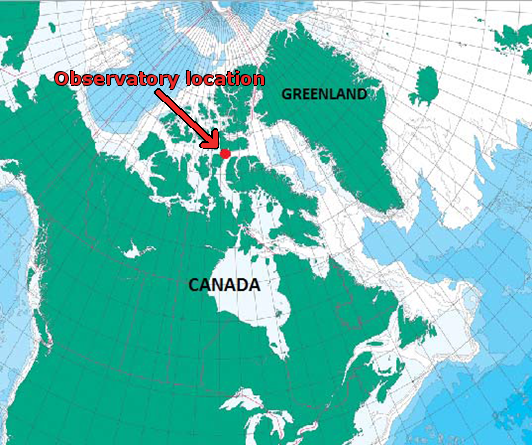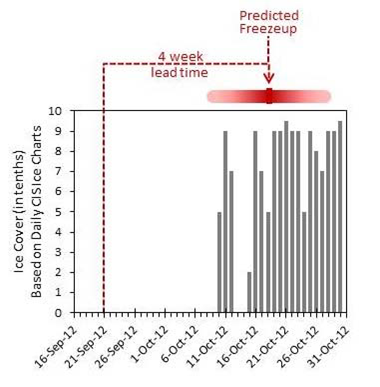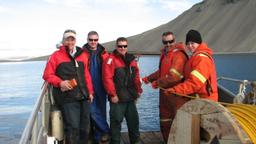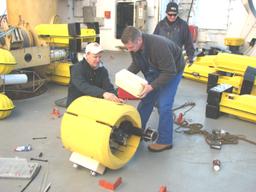DFO's Real-Time Arctic Ocean Observatory
Changing climate in Canada’s Arctic presents both challenges and opportunities. There is a need to monitor the environment to understand the changes, and mitigate their impacts. There is also the need for relevant, up-to-date data to support increased activity and responsible development in a more accessible Arctic.
An ocean observatory was installed at the eastern end of the Northwest Passage in 2009 to provide hourly ocean and ice conditions for use by mariners and climate modellers.
Data from instrumented moorings are acoustically transmitted to a "data hub" at the offshore end of an underwater cable, sent through the cable, and then transmitted from the shore station by Iridium satellite for access on the web.
Recent Ocean Conditions in the Barrow Strait Observatory
Ice draft on the Barrow Strait
Ice draft is the thickness of the ice below the waterline. Our instrumentation measures ice draft every 3 seconds. In the graph below, an average of these measurements is plotted for a 6 hour period. If ice is mobile, then there can be a lot of variability in the ice draft over the 6 hour period. For this reason we also plot the maximum measured value for the 6 hour period.
The histograms below provide more detail on how much variation there is in the observed ice draft over a 6 hour period. Yesterday’s histograms for each 6 hour period are shown. To help with interpretation, consider a bar centered on 1 m that reaches up to 60 on the “frequency in %” axis. This indicates that 60% of the measurements over that 6 hour period indicated an ice draft of 1 m.
Barometric pressure at the Barrow Strait Observatory
When does the Northwest Passage freeze up for the winter?
Our observatory provides a new capability for forecasting this important event.
Real time data from the observatory, combined with knowledge gained from previous long-term monitoring in the area, has allowed us to provide accurate freeze-up forecasts with lead times of 2 to 4 weeks. These ice forecasts, combined with the bi-hourly year round ice and ocean data, point to the value of real time observatories for marine and resource development activities in remote Arctic locations.
For further information on the DFO real time Arctic observatory, and related science, contact Jim.Hamilton@dfo-mpo.gc.ca
Or see the following publications;
James M. Hamilton & Merle D. Pittman (2015): Sea-Ice Freeze-up Forecasts with an Operational Ocean Observatory, Atmosphere-Ocean, DOI: 10.1080/07055900.2014.1002447
Hamilton, J. M., K. Collins, and S. J. Prinsenberg (2013), Links between ocean properties, ice cover, and plankton dynamics on interannual time scales in the Canadian Arctic Archipelago, J. Geophys. Res. Oceans, 118, 5625–5639, doi:10.1002/jgrc.20382.
Acknowledgements:
Defence Research and Development Canada (DRDC-Atlantic) have provided logistical support and shared infrastructure at their Gascoyne Inlet “Northern Watch” camp on Devon Island to help make this project possible. The Canadian Department of National Defence (our CONCEPTS partner) has contributed financial support, and the Canadian Coast Guard has provided the required ship support.
- Date modified:





